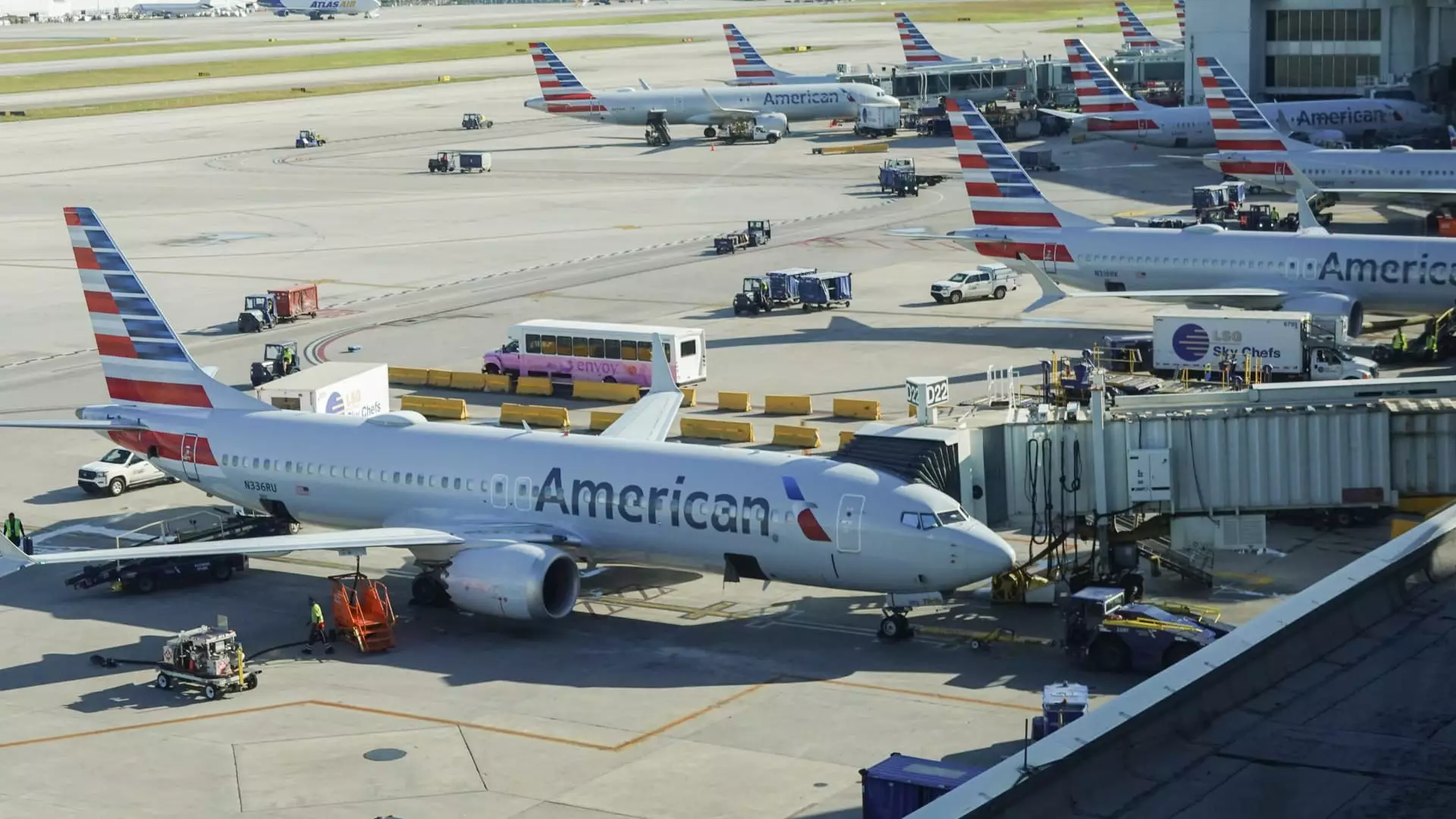On Tuesday morning, American Airlines faced a significant operational disruption due to a technical issue that compelled the company to momentarily ground its U.S. flights. This incident occurred during a peak travel period when holiday demand typically surges, underscoring the precarious nature of airline operations in today’s tech-dependent environment. While the disruption lasted less than an hour, the ripple effects could have been substantial, considering the sheer number of travelers affected during such a busy season.
According to a statement from American Airlines, the grounding was triggered by a network hardware glitch involving a system maintained by DXC Technology. This particular platform is integral to essential flight operations, controlling critical data necessary for flight preparations, such as aircraft weight and balance. Such data is crucial for ensuring the safety and compliance of flights before they depart. American Airlines reassured customers that the issue had been swiftly resolved, allowing flights to resume shortly after the ground stop was requested.
The Federal Aviation Administration (FAA) disclosed that the ground stop was initiated at the airline’s request, a standard procedure for controlling air traffic during operational hiccups. Ground stops are essential operational tools not only for technical failures but also in the face of adverse weather conditions. They help prevent overcrowding at destination airports, which can occur if airlines continue to dispatch flights during disruptions. Such regulatory oversight is vital in maintaining an orderly flow of air traffic, especially during peak travel seasons when every minute counts.
This recent incident serves as a reminder of the vulnerabilities that airlines face in relying on intricate technology systems. The airline industry has been under scrutiny following several high-profile operational failures in recent years, such as the Southwest Airlines debacle at the end of 2022 and Delta’s troubles during a cybersecurity incident earlier this summer. These instances highlight the critical need for robust technological frameworks and contingency planning to mitigate disruptions effectively.
As American Airlines navigates this turbulence, it emphasizes the importance of communication and customer service. The company promptly issued an apology for the inconveniences caused, which reflects a commitment to customer relations that is essential in rebuilding trust after operational failures. As airlines prepare for the future, enhancing their technology infrastructure and operational protocols will be paramount in avoiding similar challenges.
While the grounding of American Airlines was a brief setback, it highlights the intricate balance that modern airlines must maintain between operational efficiency and technological reliability. Addressing these challenges proactively can aid in providing a seamless travel experience, especially during high-demand periods like the holiday season.

